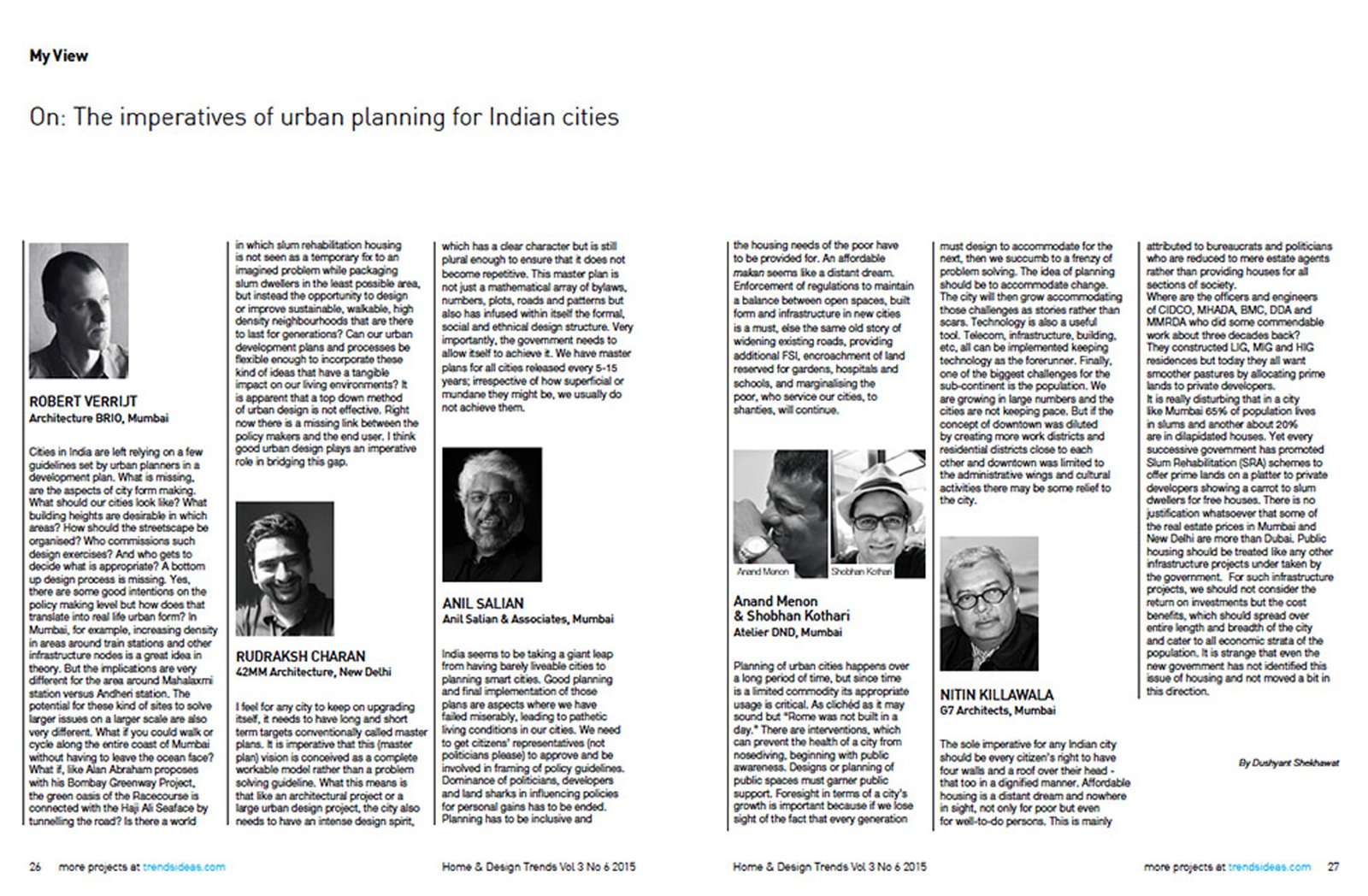- test : test
- test2 :
Home & Design Trends India discusses with a group of experts on the future of Indian Cities in an article called MyView “The imperatives of urban planning for Indian cities”
here an excerpt from the interview with Robert Verrijt:
“Cities in India are left relying on a few guidelines set by urban planners in a development plan. What is missing, are the aspects of city form making. What should our cities look like? What building heights are desirable in which areas? How should the streetscape be organised? Who commissions such design exercises? And who gets to decide what is appropriate?
A bottom up design process is missing. Yes, there are some good intentions on the policy making level but how does that translate into real life urban form? In Mumbai, for example, increasing density in areas around train stations and other infrastructure nodes is a great idea in theory. But the implications are very different for the area around Mahalaxmi station versus Andheri station. The potential for these kind of sites to solve larger issues on a larger scale are also very different.
What if you could walk or cycle along the entire coast of Mumbai without having to leave the ocean face? What if, like Alan Abraham proposes with his Bombay Greenway Project, the green oasis of the Racecourse is connected with the Haji Ali Seaface by tunnelling the road? Is there a world in which slum rehabilitation housing is not seen as a temporary fix to an imagined problem while packaging slum dwellers in the least possible area, but instead the opportunity to design or improve sustainable, walkable, high density neighbourhoods that are there to last for generations? Can our urban development plans and processes be flexible enough to incorporate these kind of ideas that have a tangible impact on our living environments?
It is apparent that a top down method of urban design is not effective. Right now there is a missing link between the policy makers and the end user. I think good urban design plays an imperative role in bridging this gap.
